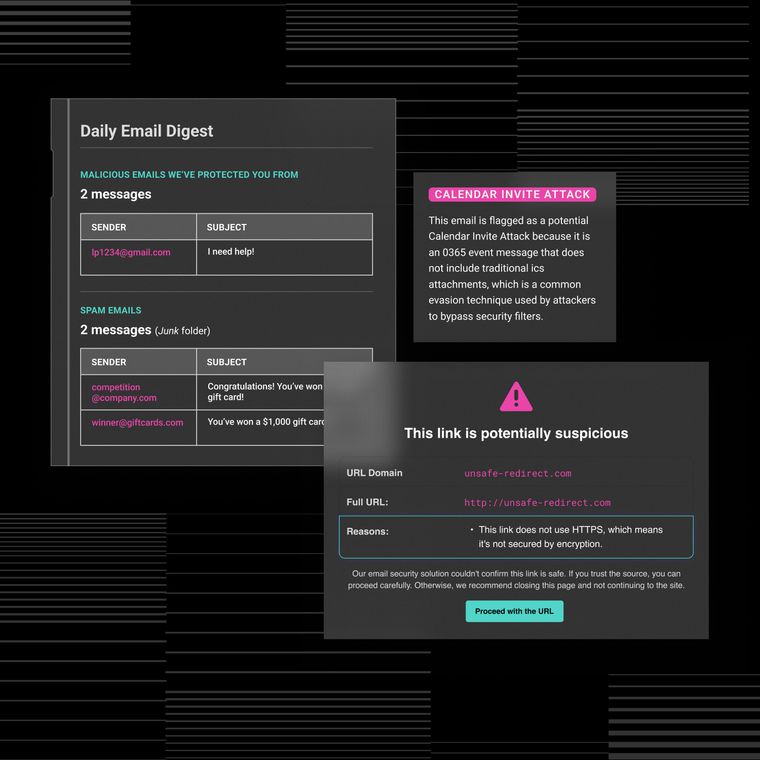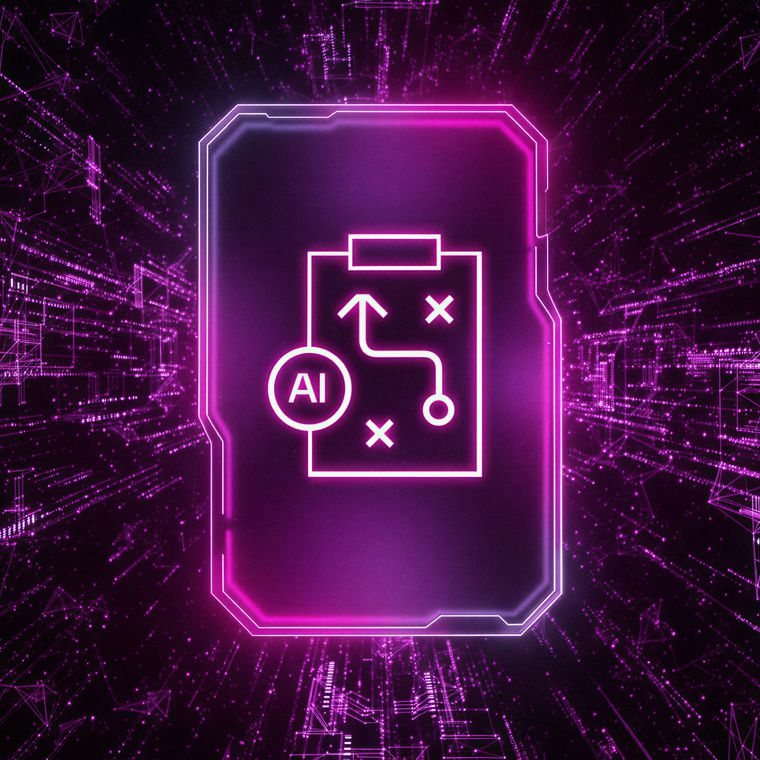10 Questions to Ask Before Hiring Incident Response Services
Make the right call during a crisis—ask these essential questions before bringing in an incident response team.
July 15, 2025
Selecting the right Incident Response (IR) partner is crucial in today's cybersecurity landscape, where the financial implications of breaches are staggering. An IBM report highlights that the average cost of a data breach has soared to $4.45 million, with a 37% increase in costs if containment is delayed beyond 30 days.
This underscores the financial urgency behind securing a capable IR partner. The speed and expertise of your chosen IR partner directly impact not only the financial costs but also the reputational damage your organization may face.
The following 10 essential questions are designed to guide security leaders in evaluating potential IR partners. With these questions, you can ensure that your chosen provider is equipped to respond swiftly and effectively, minimizing breach costs and improving your organization's overall security posture.
By exploring metrics like Mean Time to Contain (MTTC), round-the-clock response capabilities, and the tools and methodologies employed by potential partners, you'll be empowered to make informed decisions that protect your organization's financial health and reputation.
1. What's your documented Mean Time to Contain (MTTC)?
Ask for hard numbers—MTTC is the single fastest way to gauge whether an incident response partner can stop the bleeding before real damage hits your balance sheet. MTTC measures the hours between detection and containment; the longer that window, the more time attackers have to exfiltrate data or pivot deeper into your network.
Request companion metrics such as Mean Time to Detect and Mean Time to Resolve, which reveal whether slow containment stems from late detection or sluggish remediation. Reliable firms publish these figures and can explain industry-specific targets—for example, many financial institutions push for sub-24-hour containment, while SaaS providers often measure in single-digit hours. Beware of vague "industry-standard" claims, hidden escalation fees, or metrics available only after contract signing.
Verify how the provider accelerates containment. Abnormal's behavioral AI blocks email-borne threats at the API layer, reducing MTTC by stopping lateral movement before it starts.
2. Do you provide true 24/7/365 monitoring and on-call response?
Uninterrupted monitoring prevents hours of unchecked attacker dwell time during critical incidents. Distinguish between providers who operate staffed, follow-the-sun SOCs versus those relying on pager models that wake single analysts at 2 a.m.—response time differences are significant.
Demand written SLAs specifying maximum minutes to engage remotely and appear on-site when required. Verify shift rosters for weekends, holidays, and overnight hours. Request redacted after-action reports demonstrating successful off-hours containment.
Confirm surge capacity: how quickly can they double analyst numbers during multi-site breaches? Providers with documented global SOC coverage publish one-hour time-to-engage guarantees—a benchmark worth holding every candidate to during evaluation.
3. Which tools and methodologies will you deploy in our environment?
Require a complete inventory of every platform the responder will use in your environment. Ask which technologies handle artifact acquisition, live-memory analysis, and log correlation, and verify they align with your existing stack. Modern engagements typically combine SIEM, SOAR, and EDR/XDR agents with network forensics and cloud APIs—these layered controls accelerate triage while isolating compromised hosts within seconds.
Clarify who licenses each tool, where evidence is stored, and how data is deleted after case closure. Assess operational friction during deployment—Abnormal's agentless, API-based approach demonstrates how you can capture comprehensive telemetry without installing disruptive endpoint software that impacts business operations.
4. How experienced and certified is the team that will work on our account?
Team expertise directly determines response quality and recovery speed. Ask for detailed bios of the exact analysts who would handle your incidents, including average years spent in incident response and evidence of specialized experience in your industry.
Insist on seeing certifications that validate deep forensics, malware analysis, and incident-handling skills—GCFA, GREM, CISSP, eCIR, GCIH, and others. Press for the current ratio of junior to senior analysts assigned to your account and confirm that senior engineers provide direct oversight, not just occasional guidance.
5. What is your incident-response process across the NIST lifecycle?
Every credible partner maps its actions to the NIST incident-response lifecycle and should hand you proof—runbooks, metrics, and sample reports—before you sign.
Ask the team to walk you through each phase and show the artifacts that back it up:
Prepare – Show the written plan, escalation matrix, and results from recent tabletop exercises.
Identify – Demonstrate how continuous monitoring detects incidents, citing tooling integrated with the NIST incident response framework.
Contain – Provide scripted playbooks for short-term isolation and longer-term network segmentation.
Eradicate – Reveal malware-removal and patch procedures tied to asset criticality.
Recover – Share restoration checklists and validation steps that certify systems are clean.
Lessons Learned – Supply redacted post-incident reviews and show how findings feed back into playbooks.
Press for hard numbers—time to detect, contain, and recover—so you can measure success in every phase.
6. How do you integrate threat intelligence to inform investigations in real time?
Threat intelligence integration directly impacts investigation speed and containment effectiveness by providing context that separates real threats from false positives.
Evaluate providers based on feed quality and integration depth. Ask how they combine proprietary telemetry with commercial sources and sector-specific ISAC data. Verify that indicators flow directly into your SIEM and EDR platforms, enabling automated triage and blocking. Every alert should include enrichment data—IP reputation, malware family, attacker TTPs—within seconds of detection.
Relevance matters as much as volume. Your finance or healthcare environment needs intelligence tuned to that vertical, not generic threat feeds. Demand a closed-loop process where incident artifacts become new indicators, continuously improving detection logic.
Look for contextual enrichment capabilities similar to Abnormal's behavioral intelligence, which correlates user history and message content to surface only high-risk events, keeping your team focused on what truly matters.
7. Can you scale resources quickly for large or multi-site breaches?
Scaling capacity determines whether a sprawling breach is contained or becomes front-page news. When dozens of offices go dark or multiple cloud tenants are compromised, you need an incident commander who can mobilize surge staff, spin up remote forensics, and coordinate parallel containment across every affected site.
Ask the provider to walk you through their escalation playbook: How many responders can they add within the first hour, and what skills do those people bring? A mature partner maintains a global bench of analysts, forensic specialists, and malware reverse-engineers, supported by predefined relationships with regional MSSPs and law enforcement.
Verify that they can collect evidence remotely, even on endpoints without pre-installed agents, and that a single command center directs actions to prevent conflicting fixes. Request examples of past enterprise-wide events where they scaled successfully, including specific metrics on response time and resource deployment.
8. What deliverables and reporting will we receive during and after the incident?
Clear, actionable reporting is your lifeline while the breach is unfolding and the evidence regulators will scrutinize once the dust settles.
During an active incident, expect real-time visibility. The provider should spin up an incident tracking workspace that shows you—at a glance—current severity, systems impacted, and next steps. A well-run team pushes continuous updates rather than forcing you to pull status, and every step is time-stamped inside the shared dashboard.
Typical mid-crisis deliverables include live dashboards that refresh as containment actions land, short executive briefs for leadership every few hours, and a running timeline of analyst actions preserved in the same workspace.
Once recovery is complete, the reporting shifts from situational awareness to defensible documentation. A full incident investigation report should cover root cause analysis, blast radius, forensic evidence, and a remediation roadmap.
For regulated industries, the package must also map findings to SOX, GDPR, or HIPAA control requirements and include notification logs. Providers that use an incident tracking workspace automatically retain chat transcripts, ticket histories, and file uploads—material you may need for auditors years later.
Before you sign a retainer, ask to see redacted examples of these reports, confirm how long the data is stored, and clarify how templates can be customized for your board, legal team, and insurers.
9. How will you help us prepare before—and harden defenses after—the breach?
Effective response partners strengthen your security posture before threats emerge and fortify defenses after containment. During preparation, they co-author living response plans, conduct tabletop exercises that stress-test communication paths and role assignments, and audit controls to identify unpatched software and weak access policies.
Partners that embed forensic readiness—clear evidence-collection procedures and pre-configured logging—enable rapid investigation without scrambling for data when seconds count.
After containment, the same team leads lessons-learned workshops that trace root causes, refine playbooks, and deliver prioritized remediation roadmaps. Expect concrete guidance on patching exploitable vulnerabilities, segmenting flat networks, and tightening identity governance. Reserve retainer hours for these proactive tasks and insist on documented knowledge transfer so internal engineers can maintain every new control after the responders complete their engagement.
10. What is your engagement model and pricing structure?
Understanding total cost of ownership requires line-item transparency before you commit to any partner. Start by comparing annual retainers—flat fees that guarantee rapid access—against usage-based models that bill per hour or per gigabyte of data processed. Usage-based pricing may appear cost-effective initially, but large breaches can drive invoices to unexpected levels.
Clarify whether monitoring, forensics, and post-incident reporting are bundled or sold separately. Basic service tiers frequently exclude forensic investigation hours, creating surprise charges once an investigation begins. Demand that providers specify ancillary charges such as travel and lodging for onsite work, overtime or holiday premiums, and data-egress or storage fees for evidence retention.
Abnormal AI, the Right Choice for Your Organization
Selecting the right response partner requires looking beyond surface-level promises to examine proven capabilities, transparent processes, and measurable outcomes. The best partnerships combine rapid response with proactive preparation, ensuring your organization can weather security storms while continuously improving its defensive posture.
Abnormal reduces the number and severity of incidents your IR partner must handle by stopping email-based attacks before they reach employees. The platform connects directly to Microsoft 365 and Google Workspace through APIs, ingesting rich telemetry without agents or downtime.
See how Abnormal can strengthen your security operations and reduce your incident load—request a demo today.
Related Posts
Get the Latest Email Security Insights
Subscribe to our newsletter to receive updates on the latest attacks and new trends in the email threat landscape.


